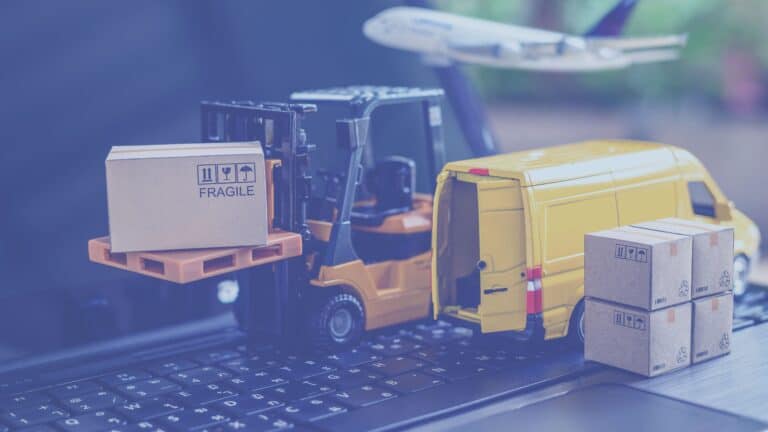
A Snapshot of Supply Chain Technology
Breaking down the latest supply chain technology into several categories to provide a snapshot of the current state of the industry.
By Hugo Britt | January 17, 2023
Spare a thought for supply chain managers during the Age of Sail. Nineteenth-century shipowners in the great maritime trading centers of America – New York, Boston, Philadelphia, and New Orleans – would wait for months with little or no news of their ships’ fate. Zero visibility of the risks their ships faced, from storms to piracy and political instability, rendered those on shore helpless to intervene.
That is why the most important gains in supply chain technology have been in the area of visibility. But that is not the only area where technology is rapidly evolving. Technology is streamlining cross-border trade, helping predict demand, and improving speed and efficiency at every stage of the supply chain.
Supply chain technology
In this article, we break down the latest supply chain technology into several categories to provide a snapshot of the current state of the industry.
Streamlined cross-border trade
Supply chains can grind to a halt due to the need to comply with time-consuming and complex regulations including customs and import/export laws. Other delays are caused by a lack of standardization and coordination among agencies, logistical challenges such as transportation and warehousing, as well as issues with documentation and communication.
The good news is that several technologies are being used to streamline cross-border trade, including:
- Electronic Data Interchange (EDI): EDI is a method of transmitting business documents, such as purchase orders and invoices, electronically between companies. This allows for faster, more accurate, and more secure transmission of trade documents.
- Blockchain: Blockchain technology is used to create a decentralized and secure digital ledger of all transactions. This can be used to track the movement of goods and ensure that all parties involved have a shared, tamper-proof record of the transaction. For example, Walmart is using blockchain to track produce from farm to store, and Maersk is using blockchain to track shipping containers.
- Artificial intelligence (AI): AI-powered tools can be used to automate trade-related processes, such as document processing and compliance checks, which can help to reduce delays and errors.
- RFID and GPS: RFID (radio-frequency identification) and GPS (global positioning system) technology can be used to track the movement of goods in real-time, which allows for more efficient logistics and greater visibility into the supply chain.
- e-Commerce Platforms: Online marketplaces and e-commerce platforms provide a digital platform to connect buyers and sellers from different parts of the world. This makes it easier for small businesses to participate in cross-border trade by reducing the complexity of finding new customers and managing logistics.
- Automated customs clearance: Automated customs clearance systems like electronic data interchange for administration, commerce, and transport (EDIFACT) help to quickly and accurately process customs declarations and other trade-related documents, reducing delays and errors.
Technology is streamlining cross-border trade, helping predict demand, and improving speed and efficiency at every stage of the supply chain.
Automation and Robotics
Automation and robotics are being increasingly used to streamline supply chain operations and improve efficiency. This includes the use of drones for delivery and inventory management, as well as the implementation of robotic warehouses and automated logistics systems.
Smart contracts
Smart contracts are being used to automate the tracking and verification of goods as they move through the supply chain. As IBM explains, smart contracts use blockchain to automate the execution of an agreement when predetermined conditions are met, and automate a workflow by triggering the next action.
Predictive analytics
Predictive analytics is being used to optimize supply chain operations by using data and machine learning to predict future demand, identify potential supply chain disruptions, and improve forecasting. For example, companies are using machine learning (deep learning) to predict when trains, tracks, and parts will need maintenance.
Internet of Things (IoT)
IoT technology is being used to increase visibility and control in the supply chain by connecting physical assets to the internet. This includes the use of RFID, GPS, and sensor technologies to track and monitor inventory, shipments, and equipment in real-time. For example, nearly 6.5 million doses of Covid vaccine were wasted due to cold chain failures, which is why vaccine manufacturers are using IoT sensors to monitor cold chain integrity.
Augmented reality and virtual reality
Augmented and virtual reality technologies are being used to improve training, collaboration, and visualization in the supply chain. For example, DHL is using virtual reality to train warehouse workers and UPS is using augmented reality to help train drivers.
Overall, these are just a few examples of the many different types of technology currently being used to improve supply chain operations. As the industry continues to evolve and innovations emerge, we can expect to see even more exciting developments in the future.
Supply chain technology will continue to evolve, providing the opportunity for industry practitioners to improve supply chain operations and efficiency.
For more supply chain resources visit Unaversity, Una’s knowledge center dedicated to empowering procurement and supply chain industry leaders.






